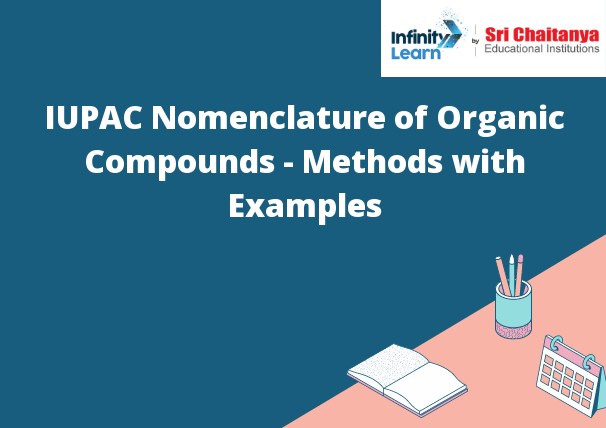Table of Contents
Nomenclature of Organic Compounds – IUPAC with examples
There are a few systems for naming organic compounds, but the most common is the International Union of Pure and Applied Chemistry (IUPAC) system. This system uses a two-part name for each compound. The first part of the name is the root, and the second part is the prefix. IUPAC Nomenclature of Organic Compounds – Methods with Examples.
The root is the part of the molecule that is the same in all compounds with that root. The prefix is a letter or group of letters that tells you something about the molecule. For example, the root for all compounds with the carbon-hydrogen bond is alkane. The prefix for compounds with one carbon atom is methyl. So, the name for methane, CH 4 , is methyl-hydrogen. The name for octane, C 8 H 18 , is octyl-hydrogen.
Sometimes, the root and the prefix are the same. For example, the root for all compounds with the oxygen-hydrogen bond is alcohol. The prefix for compounds with one oxygen atom is ethyl. So, the name for ethanol, C 2 H 6 O, is ethyl-hydrogen.

What is IUPAC?
The International Union of Pure and Applied Chemistry (IUPAC) is an international federation of National Adhering Organizations that represents chemists in individual countries. It is a not-for-profit organization that promotes cooperation in the field of chemistry, encourages the development of chemistry as a science, and disseminates information on chemistry and its applications.
IUPAC Nomenclature of Organic Chemistry
IUPAC stands for the International Union of Pure and Applied Chemistry. This is an organization that sets the standards for naming organic compounds. The system that they use is called IUPAC nomenclature.
There are a few simple rules to follow when using IUPAC nomenclature:
1. The first word in the name of an organic compound is always the root. This is the part of the name that tells you what the compound is made of.
2. The root is followed by a suffix that tells you what type of compound it is. Some common suffixes are:
-ane: This suffix indicates a hydrocarbon.
-ol: This suffix indicates an alcohol.
-ate: This suffix indicates an ester.
-ide: This suffix indicates a ketone or aldehyde.
3. When two or more compounds have the same root, the suffixes are added in alphabetical order.
4. When two or more compounds have the same suffix, the compounds are listed in alphabetical order.
Here are a few examples of how IUPAC nomenclature works:
1. The root of a compound is always the first word in the name. The root of ethane is eth-.
2. The suffix -ane indicates a hydrocarbon. So, ethane is a hydrocarbon with the formula C2H6.
Creation of Systematic Names
The systematic naming of a particular species of organism is an important process that allows scientists to communicate about the organism in a clear and concise way. The process of creating a systematic name for a species begins by assigning it a genus name. The genus name is always capitalized and typically begins with a letter of the alphabet. The species name is then assigned and is always lowercase. The species name is also unique to that particular species. Together, the genus and species names make up the scientific name for the organism.
1. Determine the Functional Group that Will be Cited as the Suffix
The suffix for this molecule is -al.
2. Locate the Longest Carbon Chain With the Required Functional Group and Add Up the Number of Carbon Atoms. It Will Determine the Prefix of A Compound’s Name.
The longest chain with the required functional group is 5 carbons long, so the compound’s name will start with “pent-“.
Characteristic Groups
The characteristic groups of a Lie group are the Lie algebra generators.
Basis
The basis of a Lie algebra is a subset of the Lie algebra generators that is linearly independent.
Nomenclature of Few Compounds
1. Hexane
2. Heptane
3. Octane
4. Nonane
5. Decane
6. Undecane
7. Dodecane
8. Tridecane
9. Tetradecane
10. Pentadecane








